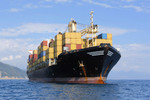
Zlochevsky said that Russia is approaching self-sufficiency for pork and poultry products, which could lead to an overproduction crisis unless some of the meat is exported.
“In the domestic market, we have created some “greenhouse conditions” in the form of quotas for meat imports. The task of import substitution is currently performed by the fact that the state protects [domestic producers] from excessive competition. But we have already reached saturation of the domestic poultry market and soon the same thing will happen in pig production sector,” he explained.
“It will therefore be necessary to start active exports. In other words, these products must be exported from the Russian Federation and sold on foreign markets.”
However, he refuted claims that the country could become an active exporter of meat products as early as next year, pointing out that the price of meat in Russia is higher than in most trading partner countries. As a result, most of these countries are looking to sell meat to Russia, rather than buy it.
“If we do come to an overproduction crisis, it will be impossible to move our meat products to foreign markets by dumping. Currently we have a chance to win a position on the [global] livestock market only through quality,” he said.
With Russia’s pig and poultry producers facing high costs at present, Zlochevsky said that prices are only likely to come down once the industry sees a return on investments.
“The return on investment projects that are currently being implemented will take a limited time in roughly 2017, the problem [of high prices] will go away. After that, the costs of investment will no longer be included in production costs and therefore prices will drop quite significantly,” he explained.
He added that by 2017, most of the government-subidised projects in the industry would have finished paying off loans.
“In recent years, the Russian government actively used interest rate subsidies on loans as a tool to support the country’s livestock industry. The state used this mechanism because the return on projects in this area was too long. Without the support, the time frame of credit repayment would have been completely unimaginable, and no investor would have gone into that,” he said.







